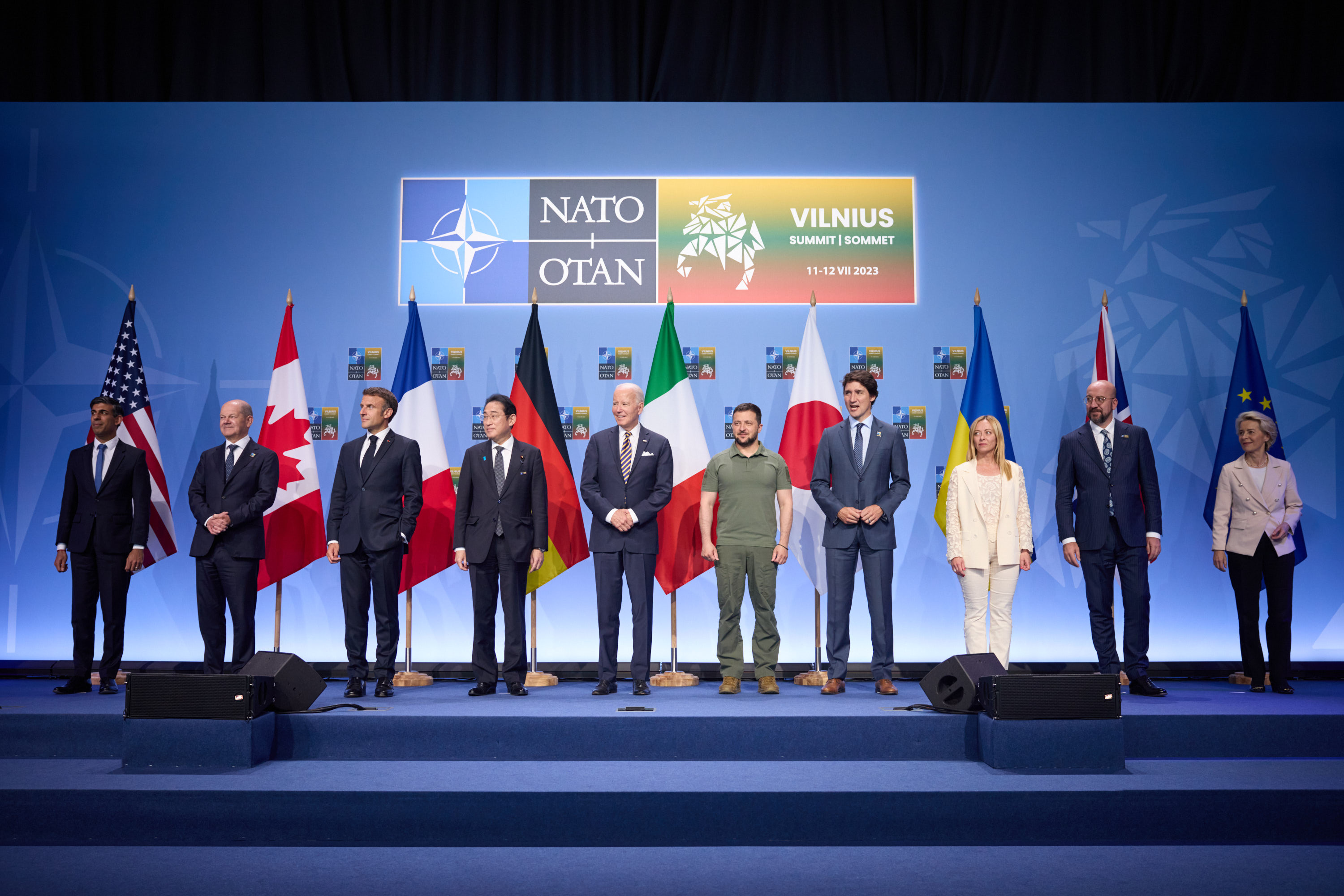NATO Summit 2023
Strong Transatlantic unity, but no membership for Ukraine

NATO Summit 2023
© picture alliance / SvenSimon-ThePresidentialOfficeU | Presidential Office of UkraineNATO heads of state and government met in Vilnius on Tuesday and Wednesday for the alliance’s annual summit. With Russia’s ongoing war of aggression against Ukraine, Sweden’s pending membership application and discussions about a possible membership trajectory for Ukraine, the two-day gathering had a full agenda. What was agreed, what was not agreed, and what we can expect as the next steps?
NATO heads of state and government met in Vilnius on Tuesday and Wednesday for the alliance’s annual summit. With Russia’s ongoing war of aggression against Ukraine, Sweden’s pending membership application and discussions about a possible membership trajectory for Ukraine, the two-day gathering had a full agenda. The Vilnius summit followed last year’s gathering in Madrid, where the members agreed on NATO’s new Strategic Concept. After agreeing on the long-term strategic outlook, it was foreseen that the summit in Vilnius would mainly focus on the implementation of this strategy. However, as so often, most of the attention went to new developments that have come up in the meantime. So what was agreed, what was not agreed (perhaps more important) and what we can expect as next steps?
What were most important outcomes?
One of the biggest outcomes of the summit was announced before the meeting even started. On Monday, Turkish President Recep Tayyip Erdoğan unexpectedly agreed to drop his resistance to Sweden’s bid to join NATO. Sweden and Finland applied for NATO membership in May 2020 but whereas Erdoğan gave a green light to Finland’s entry in March, Sweden’s bid was still pending. Earlier on Monday, Erdoğan even stepped up the pressure by coupling Sweden’s NATO accession to Turkey’s EU membership. However, after a meeting later that day between NATO Secretary General Jens Stoltenberg, Swedish Prime Minister Ulf Kristersson and President Erdoğan, they made a surprise announcement that Turkey would proceed with the ratification process. This is a big relief for both Sweden and the alliance, as the blockage was starting to discredit NATO’s “Open Door Policy”.
Long-term support for Ukraine
The second key area of unity was support for Ukraine. The allies agreed on a number of measures to step up support for and cooperation with Ukraine. In terms of defence equipment, France announced that they will supply Ukraine with long-range missiles that are much needed for its counteroffensive. The UK said it would provide a new package of weapons and Germany announced its own package worth 700 million Euros.
In addition, and perhaps most important in the long term, the allies agreed that NATO’s Comprehensive Assistance Package will become a multi-year programme. This means that Ukraine can count on structured, long-term support from NATO, with the aim to rebuild its defence sector and transition into full interoperability with NATO. This long-term commitment was further re-iterated by the establishment of the NATO-Ukraine Council. This political upgrade of the existing NATO-Ukraine Commission will formalise consultations between NATO and Kyiv on Ukraine’s aspirations for NATO membership.
Update of NATO’s defence plans
In this light, the heads of government also agreed on new NATO defence plans. These are plans that describe how the alliance should respond in case of an attack. After Russia’s attack on Ukraine and Finland’s accession, the old plans were in need of an update. In Vilnius, NATO leaders agreed on these updated plans, which will give NATO commanders more clarity on the troops and equipment that they have at their disposal and the time it takes to get them in place.
What was not decided?
The most important takeaway of the Vilnius summit, however, was a key issue that members could not agree on: NATO membership for Ukraine. After several members, including large countries like France and Turkey, announced their support for a Ukrainian membership bid in the lead-up to the summit, the big question was if the alliance would provide a concrete path towards becoming a member. The short answer to this is no. To the disappointment of Ukrainian President Volodymyr Zelensky, who travelled to Vilnius in a last-ditch attempt to find support, the official communiqué language does not go further than “we will be in a position to extend an invitation to Ukraine to join the Alliance when allies agree and conditions are met”. This ambiguous phrasing does not include an invitation or a timeframe for Ukrainian accession, which Ukraine and some of the allies had hoped for.
What’s next?
The next steps will mainly focus on the implementation of the agreements. Swedish accession must now be ratified by the Turkish and Hungarian parliaments, which is expected to happen in the fall. Hungary has announced that it will follow the Turkish decision, so if everyone sticks to what was announced, Sweden can finally become a member before the end of the year.
The question of Ukraine’s integration in NATO will undoubtedly still be a topic at the next summit, which will take place in Washington, D.C., in July 2024. For Ukraine, this offers some time to consolidate the progress that was made already and build up a stronger case towards those allies that are still hesitant. In the meantime, the commitments towards long-term support are already a step in the right direction.
